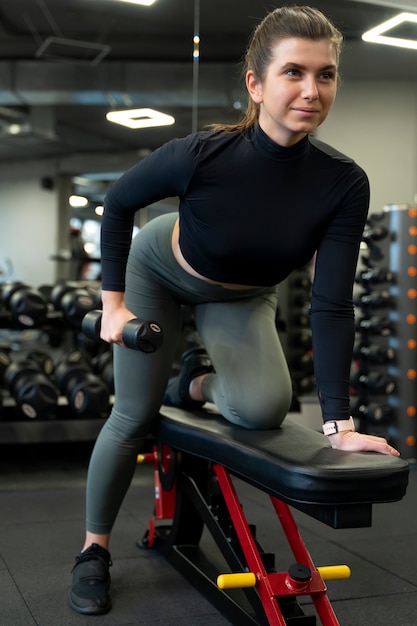In the world of strength training and bodybuilding, the incline barbell bench press is a must-do exercise. It’s great for working the upper body and is also known as the inclined bench press. This classic move is a part of many workout routines since it offers a range of benefits for building strength and improving physique.
Understanding the Incline Barbell Bench Press
You perform the incline bench press on a bench set at an angle between 20掳 and 45掳. You start by sitting on the bench with your back straight, legs apart, and feet firmly planted on the ground behind your knees. This position helps maintain the natural curve of your back and supports the weight more effectively.
Your elbows should be bent, wrists straight, and shoulders turned outward, ensuring your elbow, wrist, and barbell are aligned vertically. The barbell rests on the upper part of your sternum or collarbones, and your hands should grip the bar at or slightly wider than shoulder-width apart.
To do the exercise, you push the barbell straight up in a vertical line. As you push, your shoulders move and your elbows extend, with the scapulae rotating upward toward the end of the movement. The exercise ends with your elbows fully extended.
Throughout the movement, some of the weight should be shifted to your feet. Correct execution requires good shoulder mobility, especially at the start of the movement, to maintain the proper position.
The Muscles Engaged
The incline barbell bench press works several upper-body muscles:
– Group 0: Includes the large pectoral muscles, anterior deltoid, coracobrachialis, and the biceps brachii (to a lesser extent). These muscles handle shoulder flexion.
– Group 1: The lateral deltoid is responsible for shoulder abduction.
– Group 2: The triceps brachii and anconeus manage elbow extension.
– Group 3: Involves the lower part of the thoracic serratus major, lower trapezius, and mid-trapezius bundles. They are responsible for rotating the scapula upward.
Stabilizing muscles play a crucial role in maintaining the stability of your shoulder, scapula, elbow, grip, torso, hip, knee, ankle, and foot.
Variations of the Incline Bench Press
Though the barbell incline bench press is the most common, you can also try variations like the incline bench press with dumbbells. This variation can provide a different challenge for your muscles and add some variety to your workout routine.
Conclusion
The incline barbell bench press is a versatile and effective exercise that targets many upper-body muscles. Proper form and understanding of the muscle groups involved are key. Adding this exercise to your strength training routine can significantly enhance your upper body strength and muscle development.







